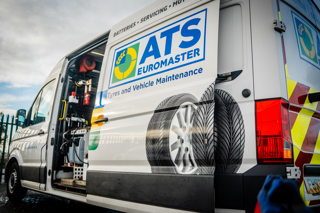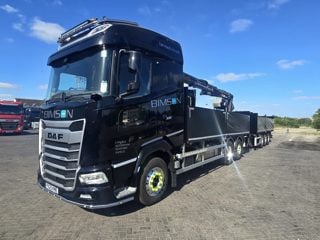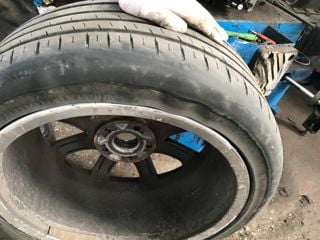Option 5: The combined approach
Rather than taking a blanket decision, fleet operators could try a more tailored approach based on the type of vehicle, where they operate and what they are used for.
To a certain extent, fleets like AAH Pharmaceuticals and DHL already do this as they have different approaches for their company cars and vans.
But West Yorkshire Police (see case study, below) has taken it a step further by adding the fitment of cold weather tyres all year round for certain vehicles and issuing snow socks to drivers that use standard tyres.
Pros
For fleets that operate in different parts of the UK or have different uses for their vehicles, with some needing to be on the road in bad weather and some not, this may be the best solution.
Cons
This is much more complex and will require more management.
It may be easier for fleet operators that outright purchase (like West Yorkshire Police) rather than those who contract hire as they will have more flexibility and control over tyre choice.
It is more costly than simply running standard fit tyres with the different tyre prices and the same issues around storage and taking the tyres on and off.
Case study: West Yorkshire Police
Head of transport: Steve Thompson
Began fitting cold weather tyres: 2009
Percentage of fleet fitted with cold weather tyres: 14%
West Yorkshire Police uses a range of tyre options: cold weather tyres all year round on its BMW X5s; standard fit/summer tyres and snow socks for its road policing unit and a combination of standard fit/summer tyres and cold weather tyres from autumn to spring on other vehicles.
The force began trialling cold weather tyres four years ago as an alternative to purchasing more 4x4s and has gradually increased the number of vehicles that run on them.
As a result the tyre budget has increased by 12.5%. But Steve Thompson, head of transport at West Yorkshire Police, says this is offset by the police officers having the ability to support the public in bad weather.
“Main roads are gritted but estates and other areas might have little grit which can make access difficult if you don’t have cold weather tyres,” he says.
The force’s command team decides which vehicles to send where during snow.
The X5s have cold weather tyres all-year round as it is “a heavy duty tyre with a deep tread”.
“The tread lasts longer than standard road tyres and it’s cost effective to leave them on,” says Thompson. “We tried them in the summer to make sure they handled well before we took the decision to fit all year round.”
The tyres on the beat cars are inspected in April. If there is a good level of tread – 4mm – the tyres are taken off and stored. If there is less than 4mm they are left on until the next tyre change.
There has been “no difference in mpg” from fitting cold weather tyres.
The only downside is availability.
“In the first two years we struggled to get supply,” says Thompson. “The tyres are more widely available now but there is still a shortage if you don’t place your order early enough.”
Cold weather tyres are not fitted to road policing vehicles due to speed ratings. Instead the vehicles are issued with snow socks for emergency use.























Login to comment
Comments
No comments have been made yet.